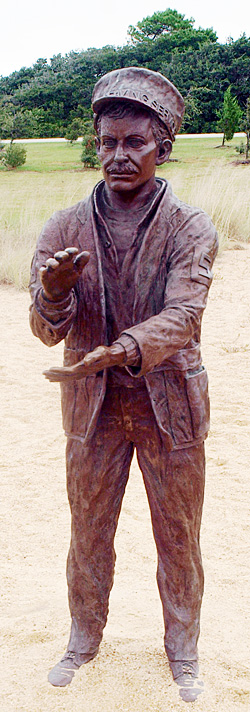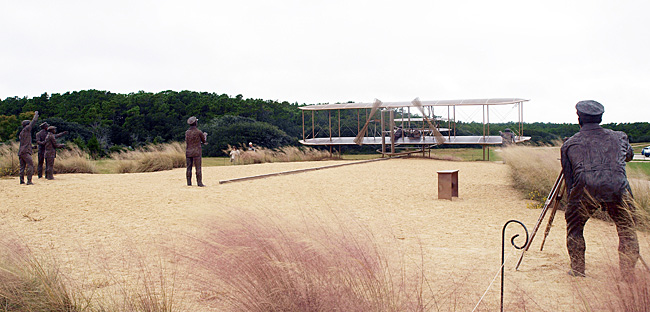Five Witnesses to History
Today, we witness history. The University of Houston's College of Engineering presents this series about the machines that make our civilization run, and the people whose ingenuity created them.
The largest Kill Devil Hill, four miles from Kitty Hawk, North Carolina, is topped by a lovely monument honoring the Wright Brother's flight on Dec. 17th, 1903. One marker on the flat ground just north of the hill shows where all four flights began that day. Four more stones show where each landed.
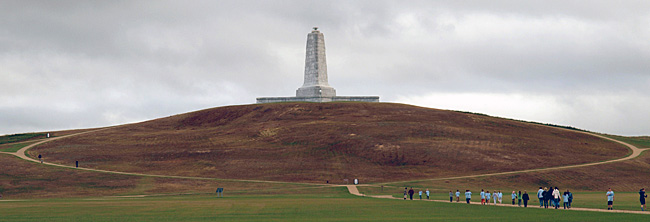

Above: the Wright Monument. Below: the big stone on the left marks where all four flights began and the other four mark where they ended. The distances seem very short for two reasons. One is foreshortening in the picture. The other is that the Wrights flew into a 27 mph wind and travelled much further in the air than over ground.
And south of the hill is a fine full-size bronze replica of the aeroplane and seven human figures. Orville Wright lies on the lower wing piloting the machine. Wilbur runs along just behind the wing tip he'd been steadying. But the other five, so lifelike, arrest my eye. They too have names and faces. W. C. Brinkley had come over from Roanoke Island. Johnny Moore, a teenager from the next town had also heard about the flight that day.
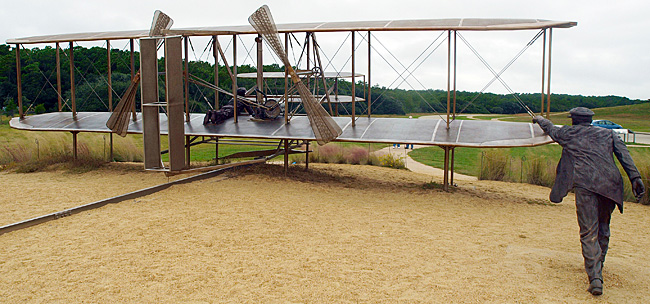
The other three came down from the US Life Saving Station in Kitty Hawk. For these are the fearful Outer Banks, adjacent to countless shipwrecks. The tough brave men who manned the lifeboats befriended the Wrights. Now they were here to see the flight. They were John T. Daniels, W. S. Dough, and A. D. Etheridge.
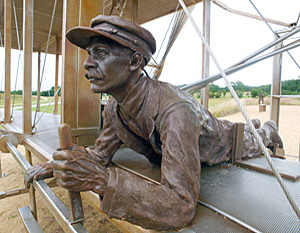
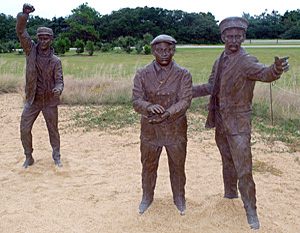
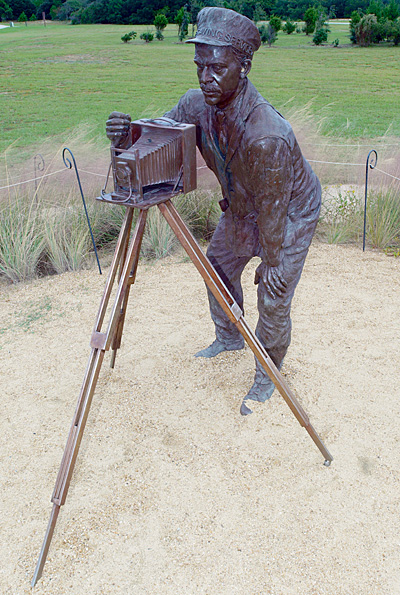
The Wrights knew they were about to make history, and they had a vintage Gundlach Korona box camera. Wilbur had to assist in the takeoff so he asked John Daniels to take the picture. Daniels had never taken a photo. But the Wrights set up their camera and said: Just squeeze the bulb when we're airborne. The sculpture shows Daniels just after he'd taken his first photo -- the first photo of an airplane in flight. Of course, he was so excited he wasn't sure he'd remembered to squeeze. But once developed, the glass plate proved to hold one of the famous photos of all time.
And Daniels' story goes on. After the fourth and longest flight, the brothers paused to discuss what next. Then a sudden gust caught the plane and overturned it. Daniels was standing by the lower wing inside the guy wires. Instead of ducking out, he held on. The plane flipped with Daniels tangled in the engine, propellers, and controls. It was badly wrecked; the engine ruined, and Daniels? Well he was miraculously unhurt, but he was now first to photograph flight and almost first to die in an aeroplane.
Later, the brothers went in to Kitty Hawk to pay their respects to the Rescue Station and to use its telegraph to let their family know they'd be home by Christmas.
After our own visit to the dunes, we asked where to find a good restaurant and were directed to the Black Pelican in Kitty Hawk. Once there, we found more than just food. For this was in the old Rescue Station building where Daniels lived. Here Orville and Wilber found friends and their telegraph link back to Ohio.
So the homespun details emerge. As they do, we see just how human history changed. We find ourselves sharing the awe of those five -- privileged to be a part of that moment. Daniels, Dough, Etheridge, Brinkley, and Moore watched as a small aeroplane clattered into the gray air, and as Earth shifted upon its axis.
I'm John Lienhard at the University of Houston, where we're interested in the way inventive minds work.
L. Wescott and P. Degen, Wind and Sand: The Story of the Wright Brothers at Kitty Hawk.(New York: Harry N. Abrams, Inc., Pubs, 1983). My thanks to Margaret Culbertson for this intriguing book.
This Eyewitness to History website gives a fine account of the first flights in Orville's own words. Click here for the famous photo. Color photos on this page are all by J. Lienhard
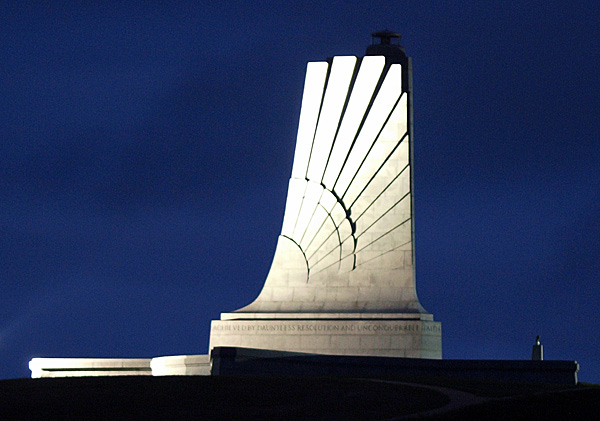
Above: The Wright Monument as it appears at night. Below right, lest he be forgot, is the fifth witness, Willie S. Dough. Bottom: The entire tableaux.
